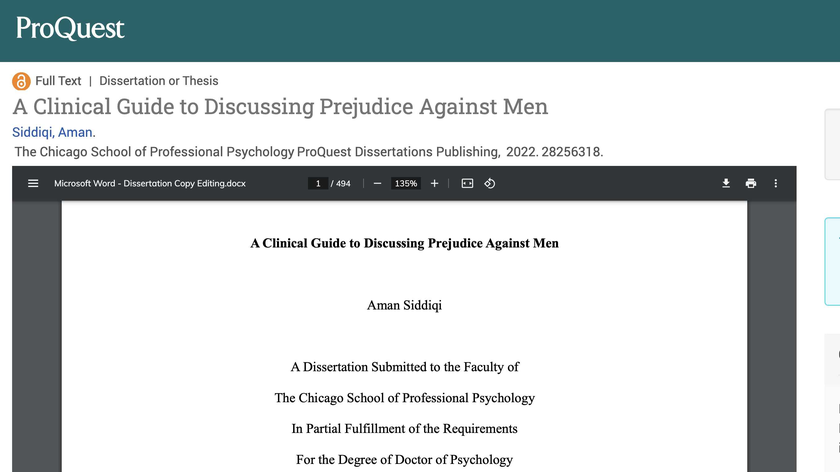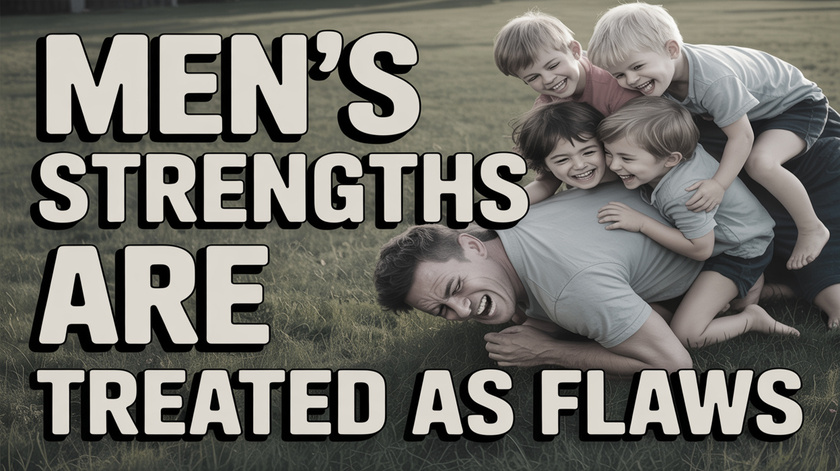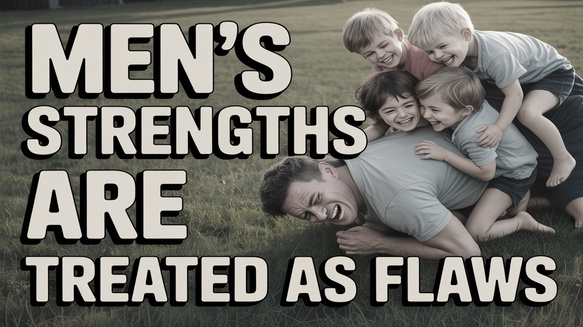Prejudice Against Men
The following is an excerpt from the dissertation of Aman Siddiqi that focuses on the prejudices against men. This section shows where Siddiqi begins describing the various prejudices that men face by taking a look at the empathy gap. The dissertation addresses psychologists and cautions them that the quality of the therapeutic relationship they are able to build with men is dependent upon their understanding of the prejudice men face. What a breath of fresh air! Read the entire dissertation here
Male Gender Empathy Gap
The male gender empathy gap refers to decreased levels of empathy for male suffering (Seager et al., 2016). Empathy takes the form of understanding the suffering of others, sharing their feelings, and experiencing an affective response to their experience. The male gender empathy gap occurs in two forms.
First, individuals can underestimate the degree of suffering experienced by men. In this case, men are assumed to be less harmed than women by the same circumstances. For example, it may be assumed that performing difficult labor or experiencing physical violence has less effect on men. This form of the empathy gap may be facilitated by the normalization of harmful experiences which men are expected to endure. Empathy for their experiences decreases as painful situations are seen as ordinary instead of noteworthy. According to social role theory, when group members are commonly observed in a specific position, that role becomes expected from future members (Eagly, 1987). The Stanford prison experiment was an example of role theory in which college students took on the position of prisoners and guards in a real-life simulation (Zimbardo, 2007). The “guards” eventually began abusing the “prisoners” even though they were all student participants. Empathy for their fellow students was reduced because they unconsciously believed the amount of empathy people deserve is based on the role play.
Second, individuals may feel less concern for the suffering men experience (Fiamengo, 2018). In this case, the degree of suffering is properly evaluated. However, individuals are emotionally unreactive solely because the suffering is experienced by men. This form of the empathy gap may be the result of negative stereotypes and attitudes towards men. As negative beliefs and feelings towards men increase, people feel less concern for the suffering they endure. According to routine activities theory, individuals can become “motivated offenders” when they view out-group members with “perceived deservedness” for their suffering (Cohen & Felson, 1979). The likelihood of discrimination increases when out-group members become “suitable targets” due to an absence of consequences for their persecution, and when they lack “capable guardians” to safeguard group members. The “Blue-Eye / Brown-Eye” experiment was an example of perceived deservedness in which a schoolteacher experimentally taught blue-eyed students negative beliefs about their brown-eyed classmates based on an arbitrarily novel prejudice (Peters & Elliott, 1970). The blue-eyed students began to encourage punishment against, and assume malice towards, their brown-eyed classmates. This demonstrates how negative beliefs about a group can reduce concern for its members and blunt affective reactions to their suffering.
The Compassion Void and Helping Behavior
Compassion is expressed by displaying concern for others, offering acts of kindness, and providing help when needed. Compassion displays a desire to improve the situation of others.
One aspect of the male gender empathy gap is reduced compassion shown towards men, referred to as the compassion void (Farrell & Gray, 2018). Mr. Keig, a transgender male who transitioned at age 39, stated the biggest change he experienced after transitioning from a woman to a man was a reduction in concern from others about his well-being (Bahrampour, 2018, Para. 20). He stated that as a woman, he would receive friendliness and acts of kindness from strangers in public places, that are no longer extended to him now that he is a man.
A meta-analysis of 36 studies on gendered-helping behavior included a total of 22,357 subjects. The study found that, overall, men were less likely to receive help than women by almost half a standard deviation (Eagly & Crowley, 1986). Men may receive less help in various domains. For example, the dictator game is a social psychology experiment that evaluates helping behavior. The game involves giving money to another recipient for no personal gain. The experiment measures voluntary helping behavior. Various attributes of the game may be manipulated to measure implicit assumptions about what types of people deserve help. A study found that women received, on average, 56% more money than men from both male and female participants (Saad & Gill, 2001). This is evidence of an implict belief that men deserve less charitable aid.
A similar experiment measured the tendency of participants to either reward everyone equally, or provide a reward based on individual performance (A. Kahn et al., 1980). It was found that when women were underperforming, participants were more likely to reward all group members equally, preventing the women from receiving less than those who performed better.
However, when men underperformed, participants were more likely to reward each group member based on their performance. This is evidence of an unconscious belief that women deserve assistance when in need, but men should only receive what they can earn.
When people observe men in need of help, their affective responses may not provoke a sense of compassion. For example, crying men have been shown to receive less sympathy than women (Stadel et al., 2019). Similarly, a psychologist related to me a conversation she had with her son. He complained that when his sister becomes upset, his mother shows her concern and empathy. However, when he becomes upset, she chastises him and tells him to calm down. The psychologist saw her daughter’s emotionality as a signal to help, but her son’s display of feelings as something negative. The psychologist told me she was glad her son spoke to her about the bias and believed he was correct.
The compassion void is especially apparent when men discuss the challenges or prejudices they face because they are male. When men discuss the difficulties of being male, others may be dismissive of their pain, ridicule their help seeking, minimize the issue, or invalidate their experiences by stating or implying that men don’t suffer.



















